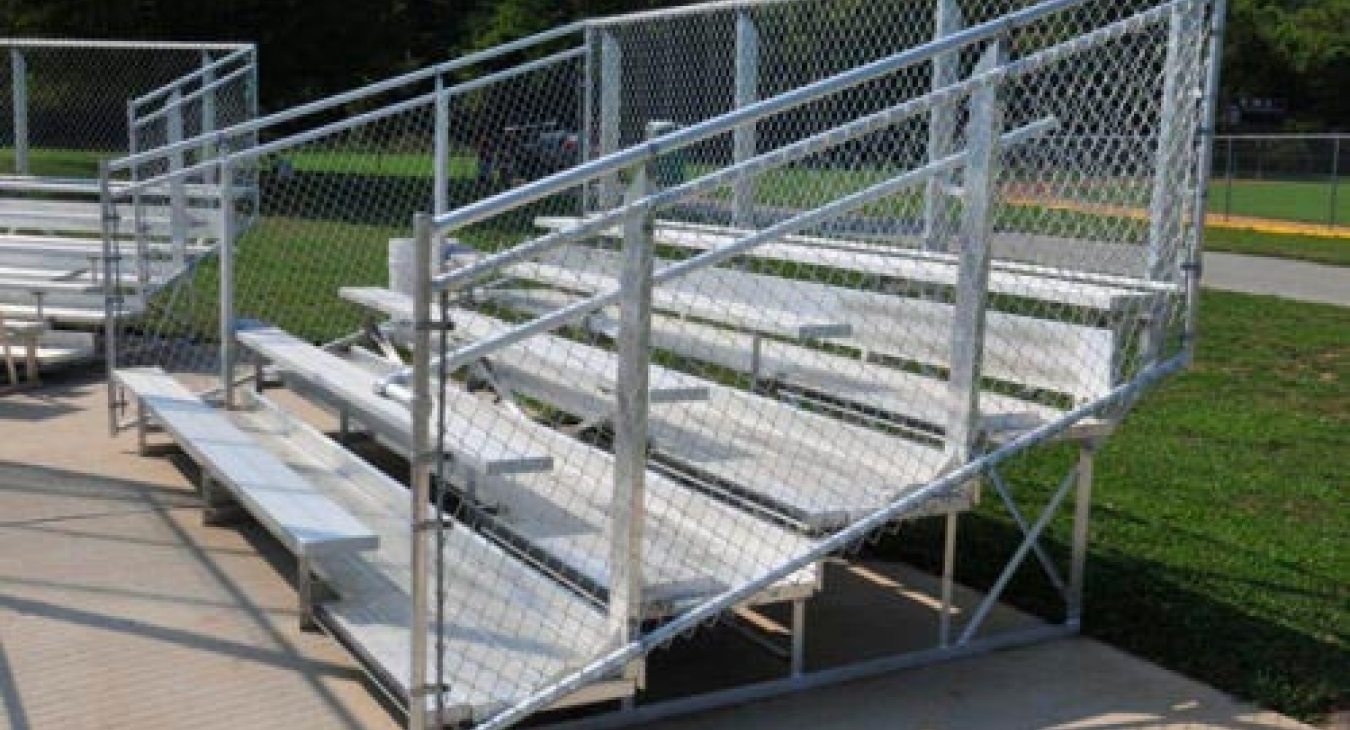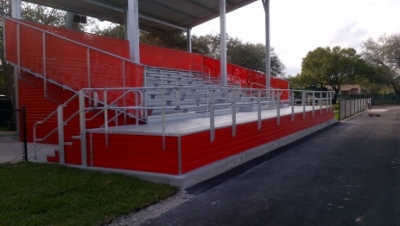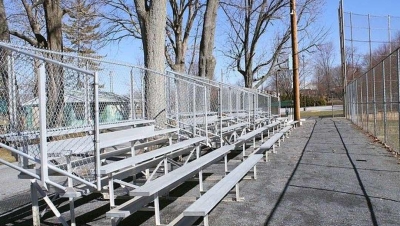Investing in new bleachers can be a daunting affair because every seating project is unique. Get it wrong though and a slew of fingers are going to point right at you. You may have many questions: Which size is best for your application? Can bleachers be moved across campus or across town? What surface do they sit on? Are their local codes or ordinances that apply?
If you don’t know where to start, don’t worry. To help you make an informed decision, read on to learn more about finding the right bleachers for your needs:
Different Types of Bleachers
Transportable Bleachers
Also known as portable bleachers, these aren’t locked into a set configuration, making them more versatile than other types of bleachers. Hence, they’re perfect for adding more seats in situations where permanent year-round installations aren’t as practical. However, they are only designed for transport throughout a single facility or field, as they are not built to withstand long distances on the highway or open road.
That said, transportable bleachers can be rearranged to suit a variety of indoor and outdoor areas, allowing you to customize the set-up per event. As for their seating capacities, most transportable bleachers are sold in five or 10-row heights. Five-row models can seat anywhere from 42 to 74 people, while ten-row models can accommodate between 82 to 144 spectators.
Tip and Roll Bleachers
Tip and roll bleachers are another quick and versatile space-saving solution, suitable for situations that require temporary seating for 16 to 42 people. They rest on rubber foot pads and wheels, protecting floors from damage while keeping the unit in place during use.
Unlike larger types of bleachers, tip and roll bleachers can easily be tipped up or “folded” onto their swivel casters, making them easy to transport from one place to another. Each unit is also easy enough for one person to move around and can fit through most doorways. And because they can be stored upright, they take up minimal space whenever they’re not in use. They also come with caster brakes that prevent the bleacher from rolling while in storage.
Standard Non-elevated Bleachers
Standard non-elevated bleachers are characterized by a first row that places spectators’ feet at ground level. Though they are smaller and provide a lower seating capacity, this makes them more cost-efficient and versatile, as they do not require the use of additional stairwells or walkways. They usually come in three rows, four rows, five rows, ten rows, and fifteen rows, which are all ideal configurations for smaller fields or venues.
Elevated Bleachers
As the name implies, elevated bleachers are raised off the ground, with the first row placing the spectators’ feet flush with the elevated front walkway. This elevation provides spectators with a much better viewing angle, getting rid of ground-level visual distractions such as barricades, walls, and passers-by. They are only accessible via stairways and ramps and come with guardrails for added safety. Often larger than non-elevated types, these bleachers are most commonly used in stadiums as well as any outdoor and indoor venues that accommodate large crowds.
Things to Consider When Choosing Bleachers
Desired Seating Capacity
Generally, a standard individual seat takes up around 18 inches of space. To determine how many people a certain bleacher can accommodate, take the length of the unit and divide it by 18 inches. Then, multiply the answer by the number of rows in the bleacher to get the gross seating capacity. Next, calculate the net seating capacity by subtracting the space used for aisles and handicap requirements.
Available Space
When choosing the size of the bleacher, make sure to carefully measure the area where it will be installed. To figure out the ideal length of the bleacher, measure the available space’s length from left to right. Then, find out how many rows of seating you can get by measuring the depth from front to back.
Surface for Installation
When it comes to bleacher installation, certain surfaces will work better than others. In most cases, bleachers are best placed on solid level surfaces, preferably concrete slabs with some anchoring to meet wind loads. However, most bleachers can be installed on any level surface that can support its overall load with the help of auger-type anchoring.
Compliance
Before buying any bleachers, you should first confirm if they meet the compliance standards of your specific state, which are based on the International Building Code (IBC). If they’re found to be in violation of said compliance standards, you may end up having to replace the bleachers entirely. To find out which version of the IBC your state is using, visit the International Code Council’s website for more information.
In Conclusion
With all of this information in mind, you should have a much easier time shopping for the perfect bleachers. As long as you do your research and ask around for recommendations, you shouldn’t have a problem finding the best option for your needs. With enough patience and determination, we’re sure you’ll find it in no time.





# of fat slob Americans per foot of bleacher
".....a standard individual seat takes up around 18 inches of space."
You gotta be kidding. Are your bleachers only designed for small
children. Look around your office, look around your community
the average fat slob ass American's rear end is more like 30+inches.
Do you know if the individuals supervising your children on the
Do you know if the individuals supervising your children on the playground have received proper training to ensure their safety? How can you be sure that they are equipped to handle any potential emergency situations that may arise?
Add new comment